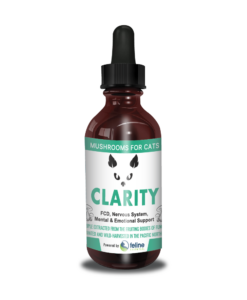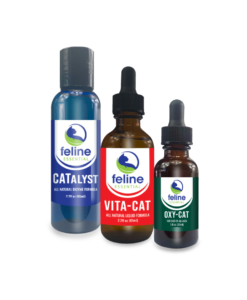Cats are known for their stoic nature, so it can be hard to tell if your cat is in pain. Absent a visible injury, we need to rely on their health history and keen observations to better know if our cat is feeling good.
We’ve made some painful mistakes on our journey of caring for cats.
When we were new cat parents, we didn’t realize cats instinctively hide their pain – so they don’t appear weak to predators. We now know how important it is to commit to regular wellness exams for each our cats. 20 years ago, we only went to the vet if there was an issue. Usually, by the time we notice something was wrong – or even just ‘off’ – the issue had already escalated to a real problem. One that had been causing pain long before was ‘saw’ it. It was heartbreaking knowing our cat had been suffering right in front of us and we never noticed.
Annual wellness exams for cats (under 10-12 years old) and twice annual visits for senior cats help catch any brewing issues. These visits also build a health history that allows you and your vet to provide more proactive (instead of reactive) care.
Veterinarian experts in feline health have identified 25 behaviors that reliably indicate a cat is experiencing pain. And a newly developed tool, called the Feline Grimace Scale (or FGS), also evaluates your cat’s comfort – just by looking at her face!
We’ve also learned a few clues that help us make sure our cats are feeling happy and healthy in between their check-ups.
Here are three things to watch:
- Appetite. Knowing how much and how often our cats usually eat is important. While cats will sometimes self-regulate their food intake (maybe skipping a meal), cats need to eat every 24-48 hours. They are not like dogs that can fast for days and remain healthy. Watching our cats eat can also let us know if something is going on with their dental health. Being familiar with their eating schedule and habits make it easy to see if there’s been a sudden loss of appetite or if eating seems painful.
- Energy. Running, jumping, grooming, bird-watching, snuggle-time, and other normal activities can change if your cat is not feeling well. If a cat start to isolate or hide, something could be bothering them.
- Eliminations. Healthy cats will pee about 4-6 times a day and poop about once every 24 hours. If you have multiple cats it can be hard to keep up with everyone’s bathroom schedule, but evaluating their ‘deposits’ daily while scooping litter helps catch any changes – like dry or runny stool. I also make it a point to catch each of our cats using the litter at least once a week to make sure it seems like a pleasant experience – no straining or crying. Recently, I’ve started keeping an eye on everyone’s urine pH to make sure it’s staying in the healthy range between 6 – 6.5 pH for cats. You can do this with regular pH strips by sneaking it under their urine stream when you catch them in the box.
Catching a change in your cats appetite, energy, or eliminations can be an early indication of an issue – saving you and your cat from something more painful.
Recommended Product for your Cat




Recent Comments